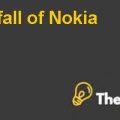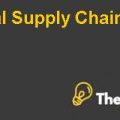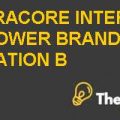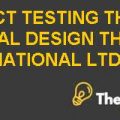
CHAPTER 02: LITERATURE REVIEW
2.1 Background
The new or the latest form of business has been the introduction of e-commerce, which has replaced the traditional form of business. This type of business has become one of the most important tool for many businesses and their activities. It has also open up new market places for different suppliers, distributors, retailers and manufactures.
For various companies, using e-commerce has become inevitable and a priority since it has helped companies globally and have enabled them to develop connection with trading partners. E-commerce is also known as an exchange of information among organizations and external stakeholders by using different modes such as telephone, computers, etc. In fact it is the combination of economic activities and e-commerce, which means that any form of economic transactions will have to be conducted through electronic connections. According to a study, economic activity can be called as economic transactions such as exchange of inspection and agreement (Mahadevan, 2000).
This process undergoes five phases, naming initiation, agreement, exchange, control and services. It is important to note that the first two phase that involve initiation and agreement have to be carried out so as to actually allow e-commerce to be applied. Along with this, the second key element of ecommerce is the electronic connection, which mainly consists of a wide range from all telegraphic wires and phone lines to develop a connection and linkage. The concept of the term, e-commerce is not a universally accepted definition since in various different context; the definition can be adjusted or matched with a circumstance (Ngai, 2002).
With a quiet and simple way, e-commerce from a communication point of view is understood as the ultimate transmission of information, services or products using computer networks or the telephones. Another research study revealed that the understanding about e-commerce is that it is a basic way of using various means of internet based on to share complete information and perform business transaction. Along with this, the concept of e-commerce can be further understood on various other perspectives that are given by a research of Kalakota (1997). From a business process perspective, e-commerce has been defined as using the application of technology in order to actually facilitate the workflow and automation of business transactions. It is also important to understand that e-commerce has quite a different perspective in the service industry. It is basically used to reach and fulfill the desires of organizations, consumers and the management as well while the purpose should be to reduce cost but still improve and increase the quality of goods and speed of the service industry (Ngai, 2002).
2.2 E-commerce versus traditional business
E-commerce has a lot of different implications and implementation as compared to the traditional business. One of the major differences is in the shift of the transaction. E-commerce performs the transaction in a digital way via computers, but it doesn’t mean that all the transaction in this way is digital goods. For instance, in order to distribute physical goods, which always need the inclusion of traditional logistics channels rather than transactions conducted over the platform of e-commerce?
Another difference is the variation in the nature of products, apart from the physical goods, development of digital goods, for instance digital books and digital music are important. It is possible to transact digital goods over the internet without the use of physical distribution. E-commerce facilitates variety of businesses and customers significantly because this is the era of technology so people like to be interested in online traffic and variety of other services and options that E-commerce has provided. With E-commerce facility, the delivery of the physical goods system has now become quite easy for customers because of the door to door home delivery service (Mahadevan, 2000).
2.3 The Emerging Market Structure of E-Commerce
It is very important to illustrate the market structure of e-commerce in order to recognize the connection between e-commerce and logistics. E-commerce can be analyzed and identified in almost every economic relationship. There are five types of e-commerce businesses i.e. Business to Business (B2B), Business to Consumer (B2C), Consumer to Consumer (C2C), Business to Administration (B2A) and Consumer to Administration (C2A). Keeping in view the objective of the study, Business to Business (B2B) and Business to Consumer (B2C) are relevant. The relationship between e-commerce and 3PL providers is measured as B2B, and the e-commerce relationship with 3PL providers with the consumer is B2C business (Hultkrantz and Lumsden, 2011). E-commerce is providing full facilitation services to both companies as well as end users. With the help of E-commerce, Business to Business (B2B) plays a significant role in the development of a business. The Business to Consumer (B2C) business is also expected to further enhance and grow significantly because of globalization and social media involvement in almost every kind of business, it can also play a significant role in the development of logistics area as well (Ngai, 2002)...................
This is just a sample partial case solution. Please place the order on the website to order your own originally done case solution.













